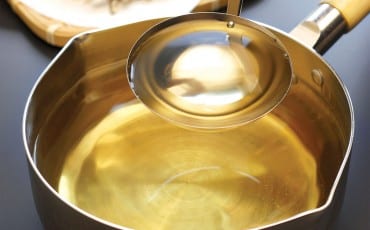Articles
Recipes
Apr 1, 2015
3 Shio-koji Recipes
Koji refers to rice malt that has been treated with a type of fermentation culture, Aspergillus oryzae. Shio-koji is koji that has been fermented in salt. Yukari’s family, who hails from Chiba prefecture, has been in the rice malt business for over 50 years, so we are very familiar with Shio-koji. This is a very traditional ingredient but in recent times, not many people were using it in their cooking. However, three years ago, a leading magazine included Shio-koji in one of their features and this revived the ingredient’s popularity.

One of the reasons for Shio-koji’s popularity is that it comes with chockfull of health benefits. First, it contains plenty of amino acids, which help boost metabolism and also control the production of melanin in your body. Second, Shio-koji also includes kojic acid, which is high in antioxidants to help get rid of toxins in your body. Third, Shio-koji also helps activate the good bacteria in your intestines, which aids digestion and helps those with constipation issues.
Shio-koji can be used on a daily basis, and is a more healthful replacement for salt. It can also be used as a dressing as it comes with a unique umami flavour. Simply mix some olive oil with Shio-koji to create a fragrant salad dressing. Another way of enjoying Shio-koji is as a dip. Here’s how: Place some Shio-koji in a bowl and place a kitchen paper on top. Add a dollop of plain yogurt on top of the kitchen paper and let the liquid drip through to the Shio-koji. You now have a yummy dip for crackers or raw veggies.
For the recipes (on the facing page), we made use of Shio-koji in two different ways. With the chicken, we used Shio-koji as a marinade. Because Shio-koji comes with yeast, the proteins help keep the meat moist and juicy. The umami flavour of the Shio-koji also complements the chicken breast meat perfectly. As for field mustard, we deliberately chose this vegetable as it reminds us of Spring. Tempura is a traditional Japanese cooking method, but we gave it a modern twist by using skewers, which makes it easier to eat, especially at parties. With the salad, we used Shio-koji as a seasoning. Its refreshing flavour is reminiscent of Spring and pairs beautifully with the fresh sweetness of new onions and Japanese parsley. We hope you’ll enjoy!”
Shio-koji (Salt-fermented Rice Malt)
Ingredients
200g dried rice malt
60g salt
300cc water
Directions
1. Place the dried rice malt in a bowl. Break up the rice malt with your hands till it crumbles, and then add salt. Mix well so that the salt spreads evenly.
2. Place the mixture in a tightly covered container after adding and mixing water. Place in room temperature for approximately 7 days. (In winter season, 14 days)
3. Stir the mixture once a day with a clean spoon while keeping it in room temperature. After 7 days, store in refrigerator*.
*Use within 3 months of preparation.
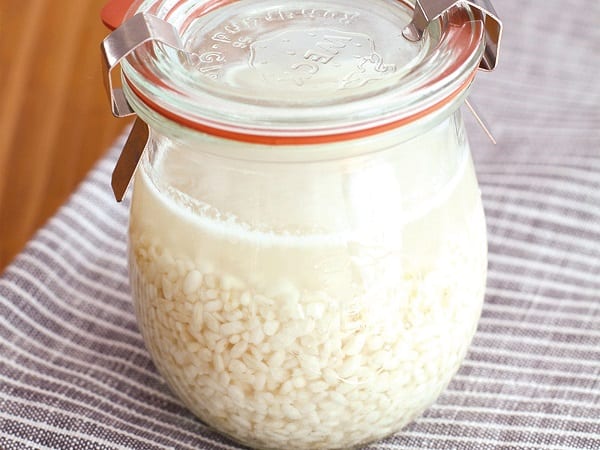
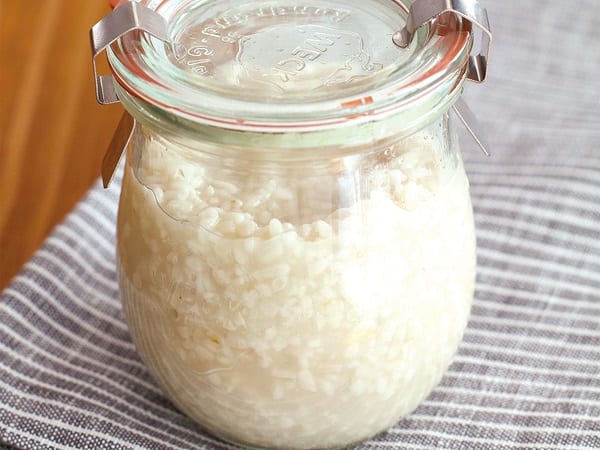
Lightly-pickled (Asazuke) new onion and Japanese parsley with sesame and Shio-koji
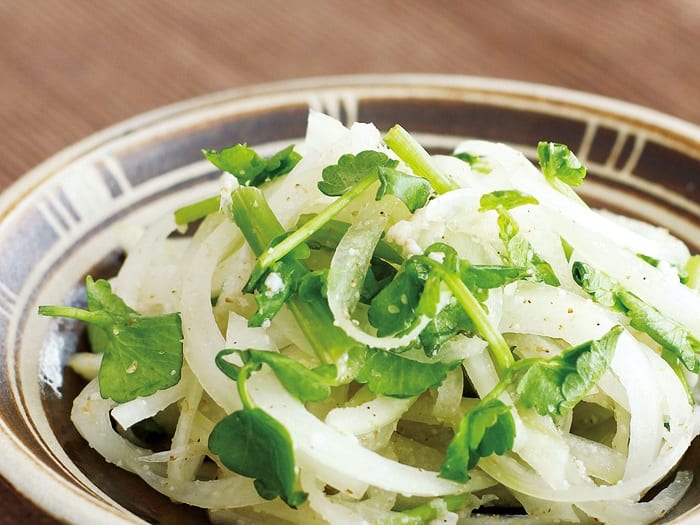
Ingredients ( 2 servings )
80g new onion
30g Japanese parsley
1/2 tbsp ground sesame
1 tsp Shio-koji
Directions
1. Slice the new onion thinly. Cut Japanese parsley in 3cm wide pieces.
2. Place new onion, Japanese parsley, ground sesame, and Shio-koji in a plastic bag and mix contents well. Place in a refrigerator for 30 minutes.
3. Lightly drain off excess water, and serve.
Tempura on skewers with field mustard rolled in Shio-koji Chicken
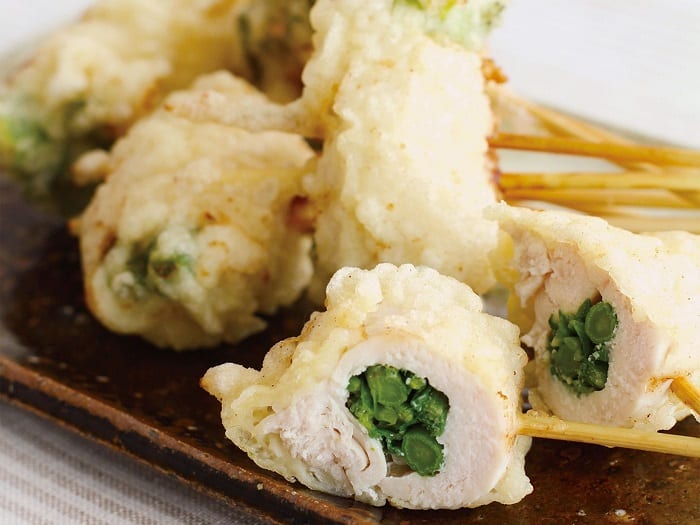
Ingredients ( 2 servings )
200g chicken breast meat
2 tsp Shio-koji
60g field mustard
100g cake flour
1 egg
130cc water
Salad oil, appropriate quantity for frying
Directions
1. Cool cake flour, egg, and water in refrigerator for one hour.
2. Skin the chicken. Incise the chicken with a kitchen knife and open it from right to left. Shave it into 6 equal parts. Place the pieces on a tray and rub with Shio-koji. Keep in refrigerator for an hour.
3. Cook field mustard and salt. Immerse in cold water, and then drain water. Cut in 4-cm width.
4. Roll the chicken with field mustard. Stick two bamboo skewers in each rool so that the rolls don’t break off.
5. Place a beaten egg in a bowl. Add water and mix, and then add sifted flour into the mixture. Mix to the extent that the batter becomes a bit lumpy.
6. Heat salad oil to 170°C. Dip the rolls in the batter and fry for 4-5 minutes until the batter is crisp.
7. Place them on a tray, and then drain off the excess oil. Place on a plate and serve.

Food consultants Go Igarashi and his wife, Yukari, are both food enthusiasts who eat, breathe, and live everything gourmet. They believe food goes beyond just function, and is an integral part of one’s lifestyle.
Text Vanessa tai photography foodcreativefactory recipes translation yuichi)








